|
MOSQUE OF THE REPUBLIC & MUSEUM OF RELIGIONS, TAKSİM, İSTANBUL, TURKEY MOSQUE OF THE REPUBLIC & MUSEUM OF RELIGIONS Taksim Istanbul, Turkey Professor Dr. Ahmet Vefik Alp Architect Urbanist TMMOB, AIA, RIBA, IAA Taksim is the main square of Istanbul. It is placed on one of the seven hills that make the topography of the Metropole. Since the Ottoman Imperial times its environs have been predominantly inhabited by non-islamic population. Splendid churches and a west-influenced architectural vocabulary constitute the urban texture of the zone. The name of Taksim, which may be translated as distribution, derives from the fact that the water has been brought to the hill from northern Istanbul forests via aquaducts and distributed to the surrounding areas from a structure called Maksem located at the hearth of the square. The Maskem is made of two structures, an octogaonal control room and a long rectangular storage tank which have been listed as historic entities. A monument by the Italian sculptor Pietro Conanico has been erected at the center of Taksim in 1928. With the Ataturk statute it houses, the Monument is considered to symbolise the modern Republic of Turkey. Although mosques are few in this area the construction of a new mosque in Taksim Square has been subject to objections and protests by certain circles of the Country. However, a significant majority proclaims that the idea of building a mosque in Taksim Square is primarily a functional need in a Country of %99 muslim population. The 2,500 m2 site of the Mosque is located immediately at the rear of the Maksem Water Tank structure which functions today as an exhibition hall. The present scheme for the Taksim Mosque may be considered as a radical step in the mosque architecture of Turkey. While mosques have traditionally been fake replicas of the 500 years old grand architecture of the Master Architect Sinan of the Ottoman Empire, the proposed conception brings a meaningful breakthrough throuh a delicate interpretation of the modern mosque architecture while preserving the symbolic values of the mosques of the Ottoman times. The avant-guard approach of the Project is expected to ease the opposition for a new mosque in Taksim. The main praying space is an elevated dome, diameter 15 meters, height 20 meters, self-structured with a irregular mesh-like innovative envelope. The curvilinear stripes getting gradually denser towards the summit provide the natural control of the sunlight. Whereas the texture of the Globe is labelled by layman as the brains shape, the birds nest, the trees texture and the like the Author descibes it as the infinity. Allah scriptures are disguised within its mesh. A glass dome, 1m inside the outer envelope, defines the main praying space. The minaret, 40 meters high, derives from a similar skin approach. The elevated dish on which the main dome sits is supported by columns reminding a praying person with arms opened to the God. The space below the dish offers a semi-open praying area where people may also socialize between prayers. Two circular vertical circulation shafts at both ends of the site ensure the traffic down to the 7 levels below the main plateau. The first basement is reserved for the conference hall and banquet room, and the second basement houses the library, the classroms and workshop studios. The 5th, 4th, and 3rd basements interconnected with mobile ramps are designated for the Muesum of Religions. The visitors start their visit from the 5th basement reserved Judaism, and cotinue up to 4th basement for the Christianity, and finally to the 3rd for the Islam. Each floor of the Muesum enjoys a circular cinevision space where visitors may watch a presentation of the birth and life of the respective religion. The 6th and 7th basements are reserved for car parking with a total capacity of 120 cars. They are serviced with two car lifts. The total enclosed area of the complex is 17,000 m2, 1,400 m2 being above the main plateau. The overall praying capacity of the Mosque in enclosed, semi-enclosed and open spaces is about 1,400 persons. The execution awaits for the official approvals. 
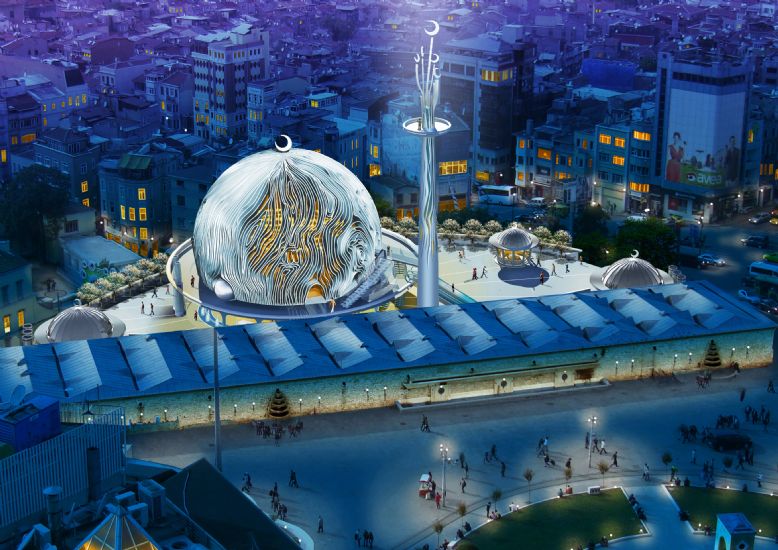
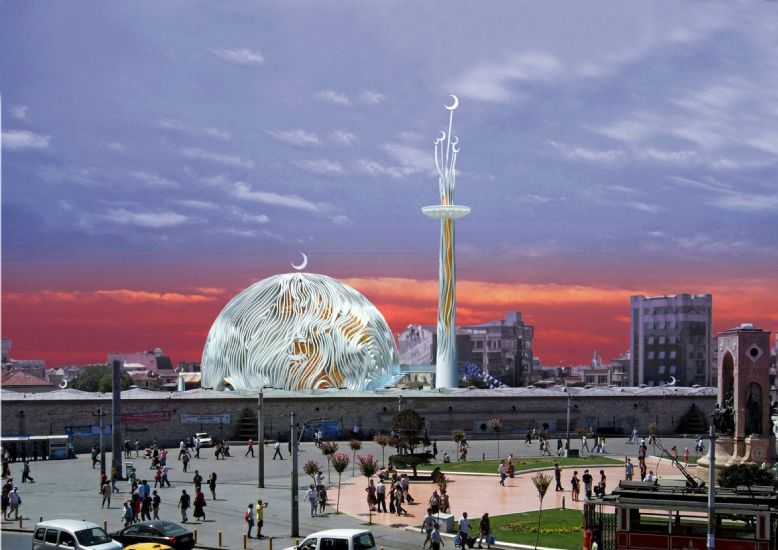
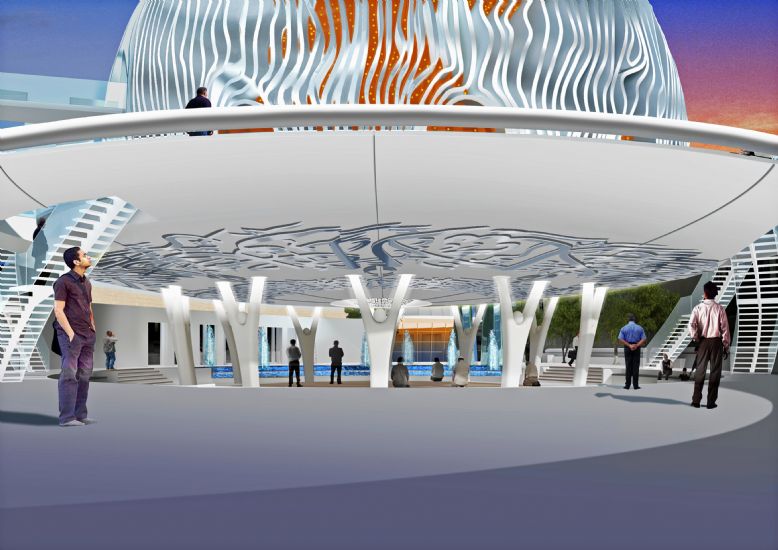
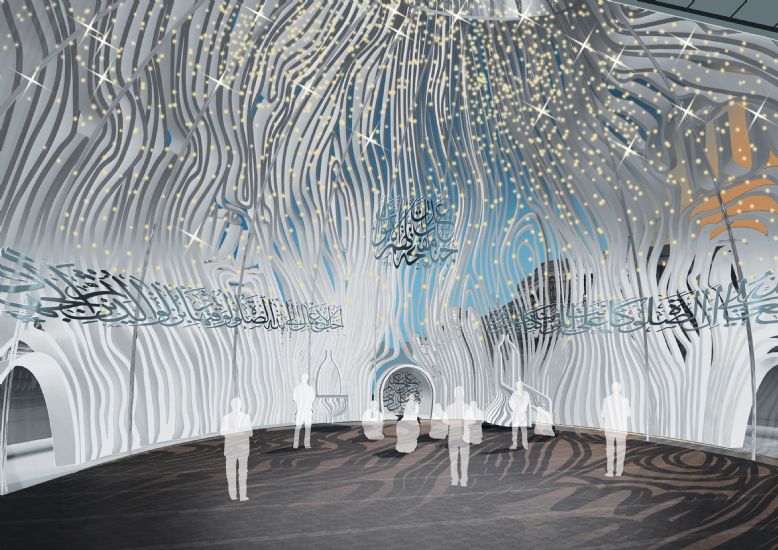
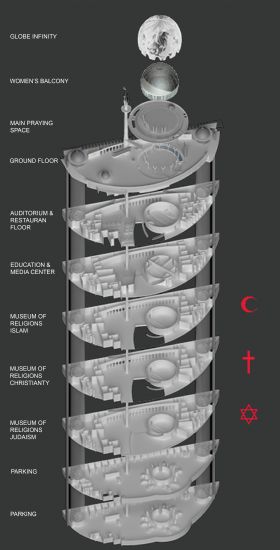

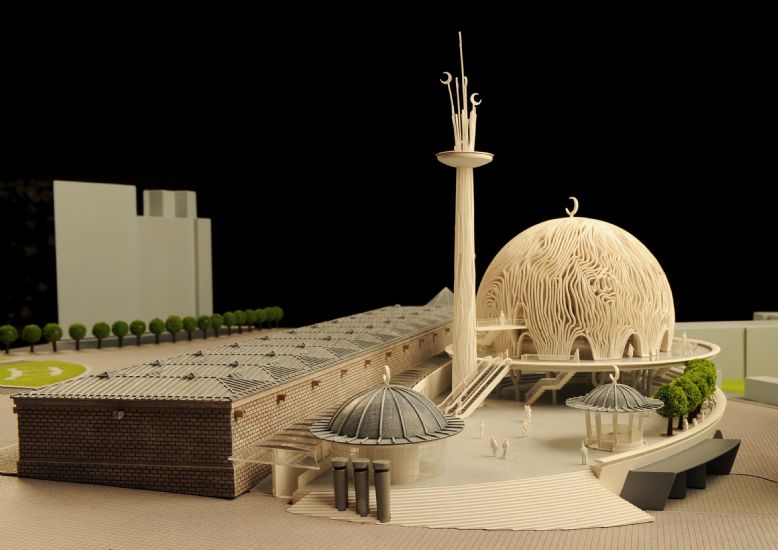


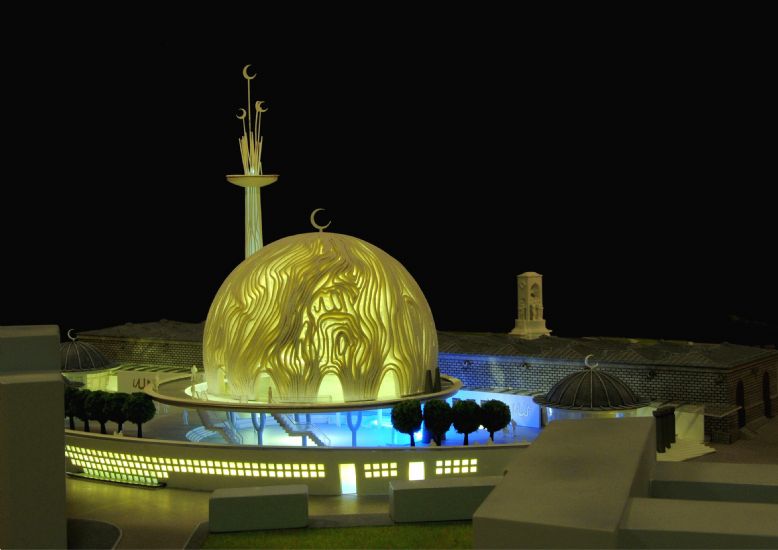
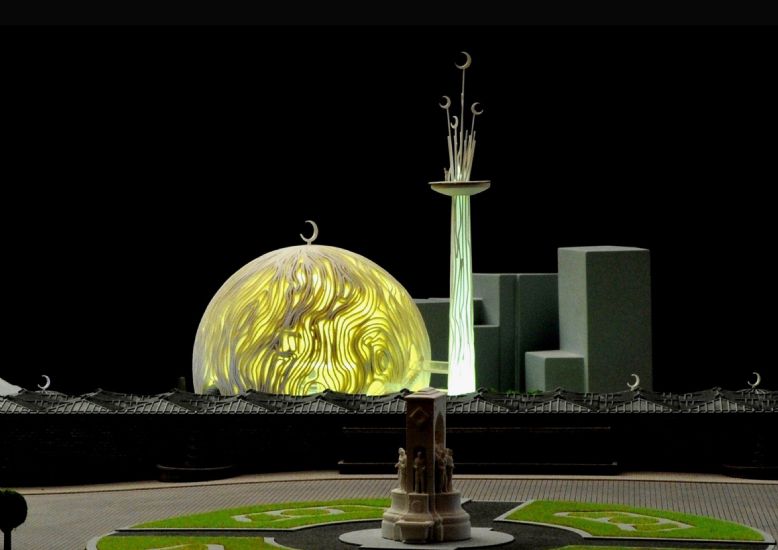



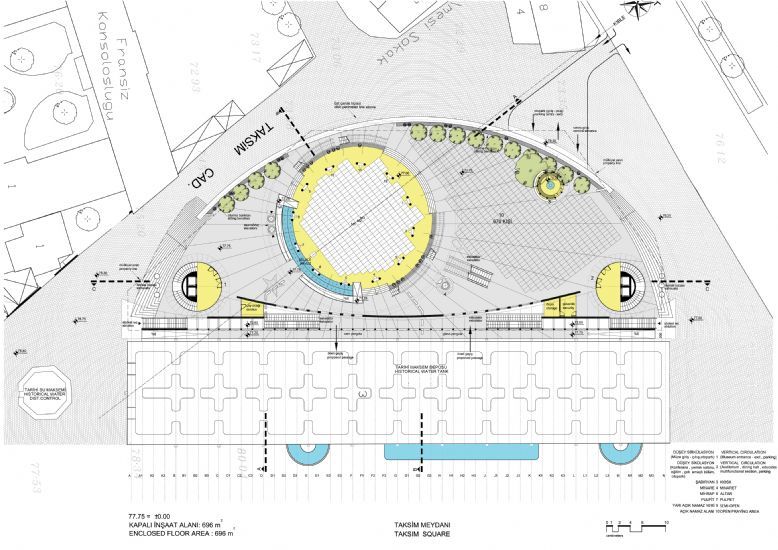

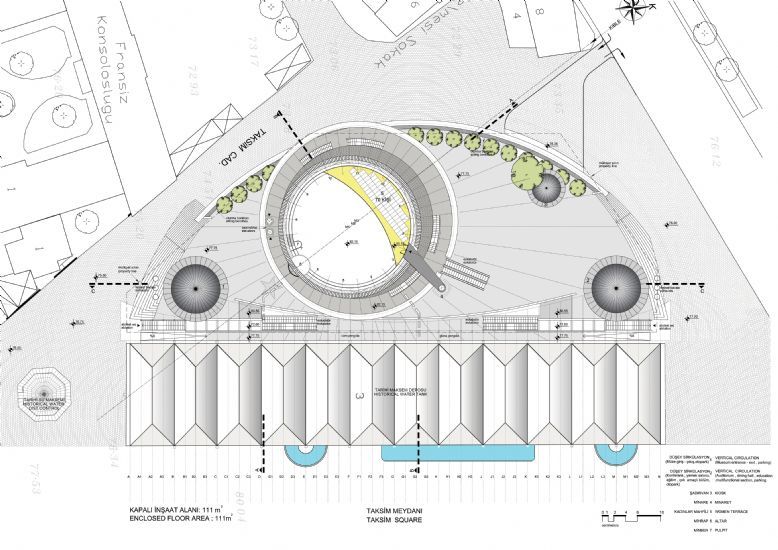
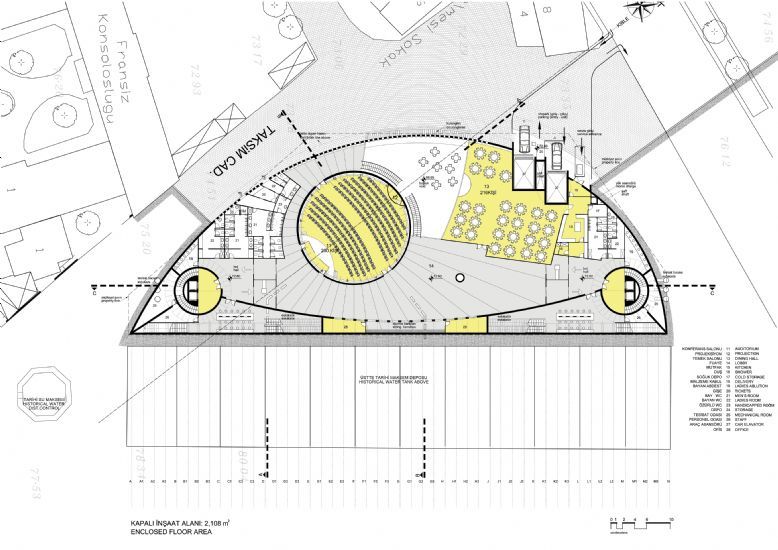
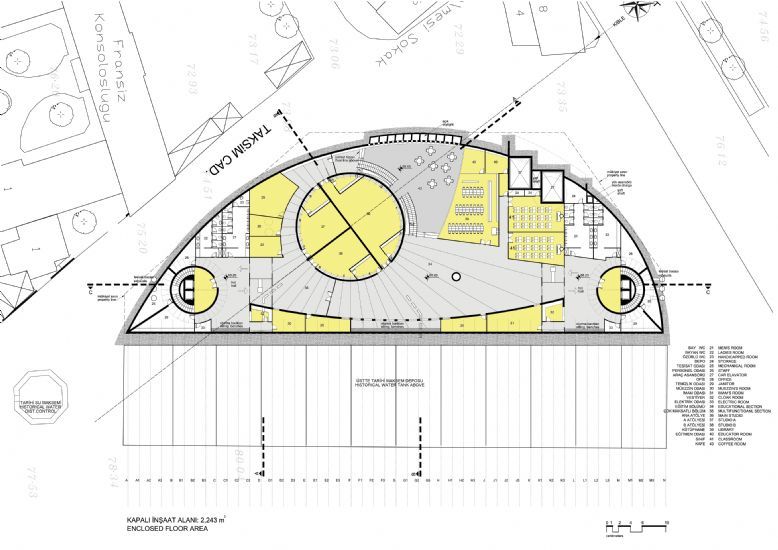

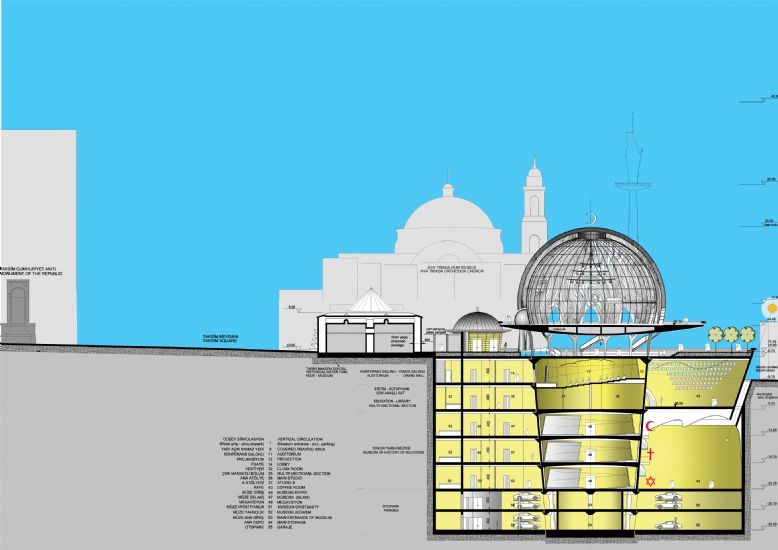
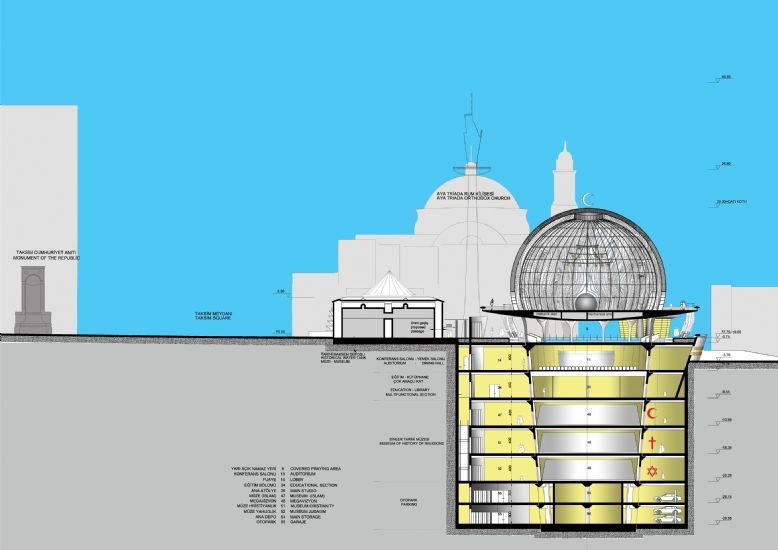
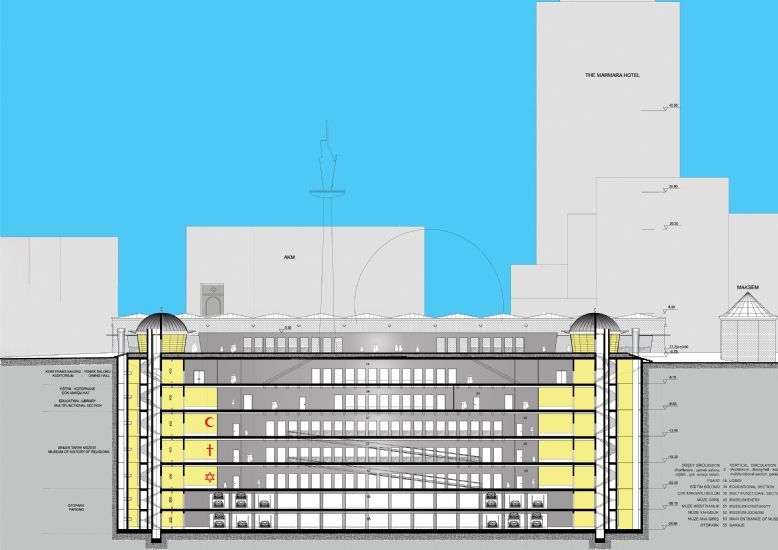

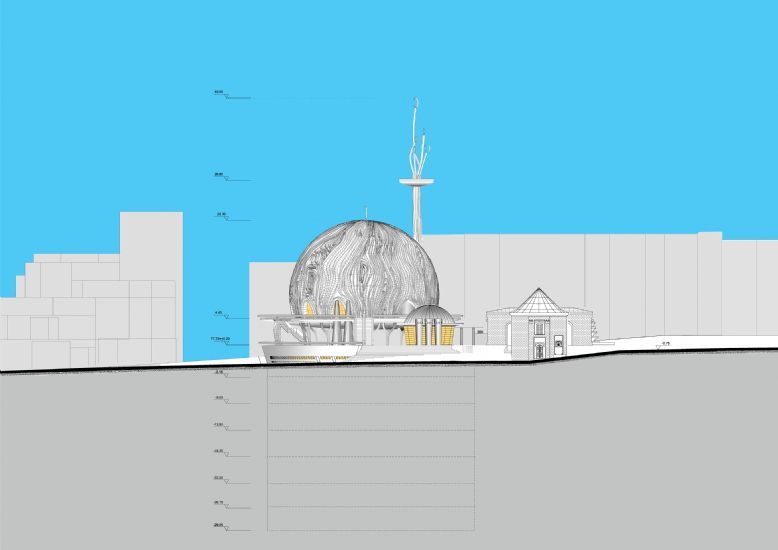


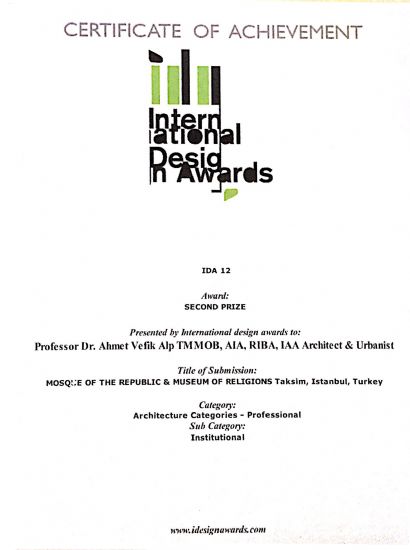

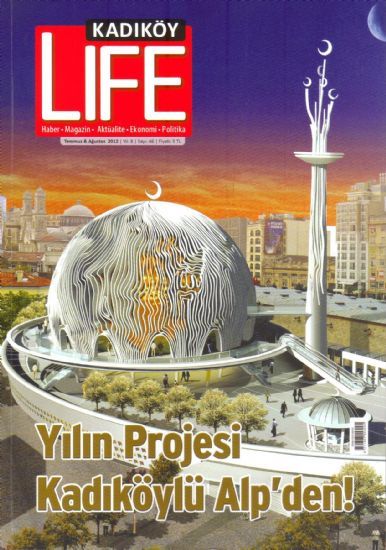
« Back |
|||||||||||||||||||||||||||||||||||||||||||
 |
||||||||||||||||||||||||||||||||||||||||||||
|
|
||||||||||||||||||||||||||||||||||||||||||||
